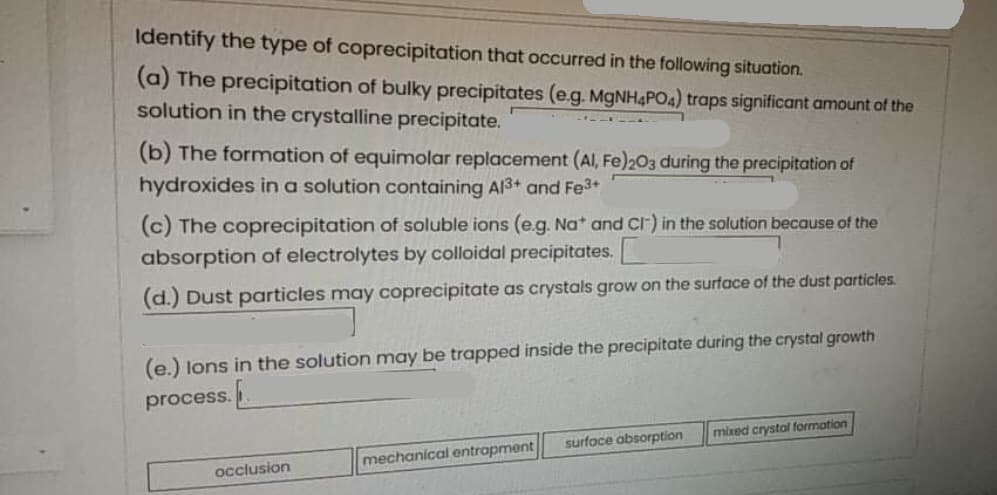Identify the type of coprecipitation that occurred in the following situation. (a) The precipitation of bulky precipitates (e.g. MgNH4PO4) traps significant amount of the solution in the crystalline precipitate. ____________ (b) The formation of equimolar replacement (Al, Fe) 203 during the precipitation of hydroxides in a solution containing A13+ and Fe3+ _____________ (c) The coprecipitation of soluble ions (e.g. Na+ and CI) in the solution because of the absorption of electrolytes by colloidal precipitates. _____________ (d.) Dust particles may coprecipitate as crystals grow on the surface of the dust particles. ___________ (e.) lons in the solution may be trapped inside the precipitate during the crystal growth process. ___________ Fill in the blanks with the following choices: occlusion, mechanical entrapment, surface absorption, mixed crystal formation
Identify the type of coprecipitation that occurred in the following situation.
(a) The precipitation of bulky precipitates (e.g. MgNH4PO4) traps significant amount of the solution in the crystalline precipitate. ____________
(b) The formation of equimolar replacement (Al, Fe) 203 during the precipitation of hydroxides in a solution containing A13+ and Fe3+ _____________
(c) The coprecipitation of soluble ions (e.g. Na+ and CI) in the solution because of the absorption of electrolytes by colloidal precipitates.
_____________
(d.) Dust particles may coprecipitate as crystals grow on the surface of the dust particles.
___________
(e.) lons in the solution may be trapped inside the precipitate during the crystal growth process.
___________
Fill in the blanks with the following choices: occlusion, mechanical entrapment, surface absorption, mixed crystal formation

Step by step
Solved in 2 steps




